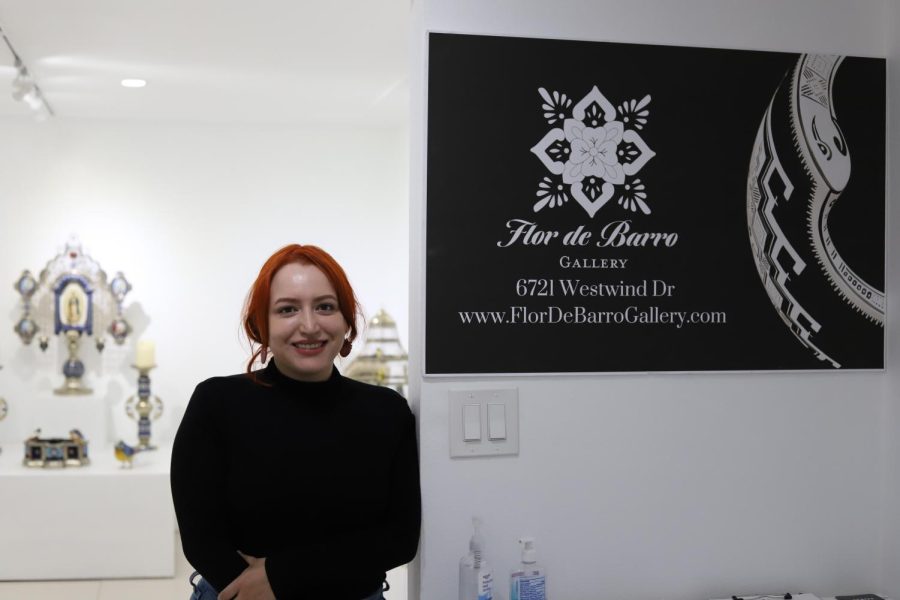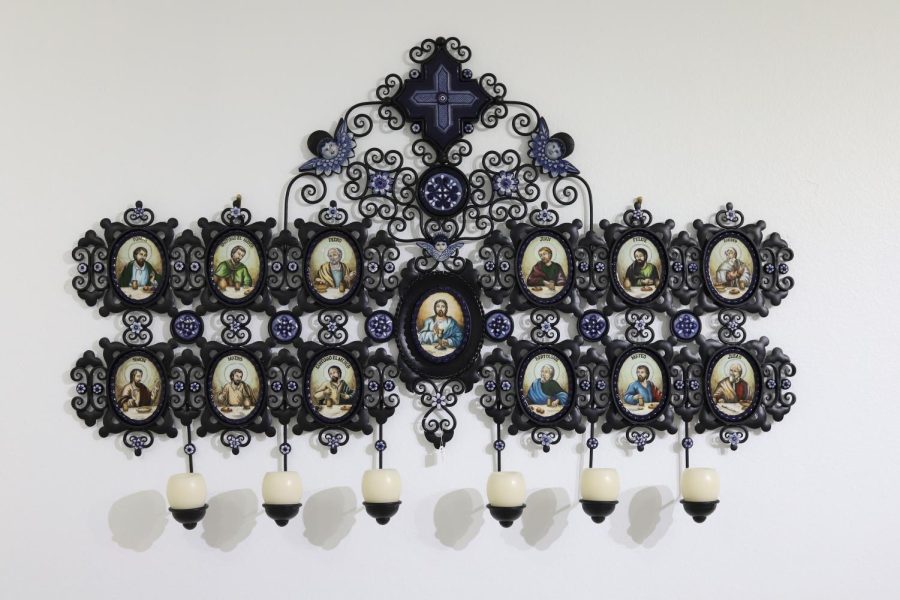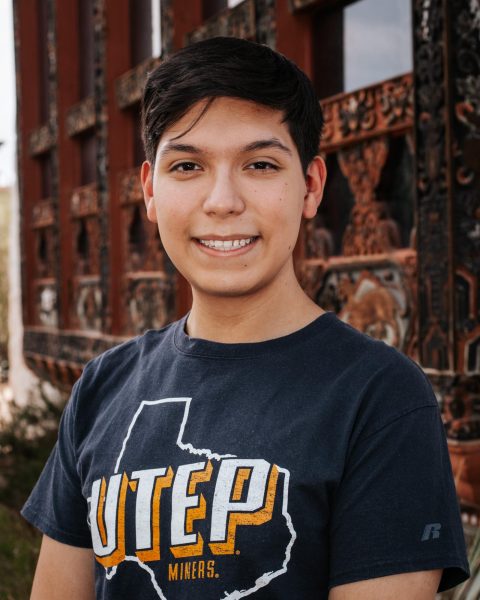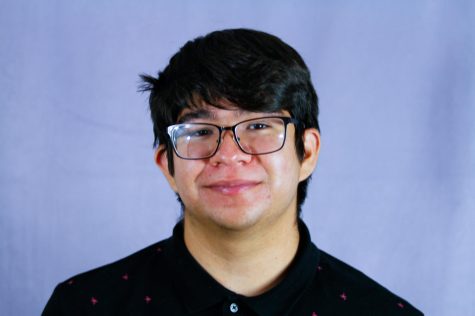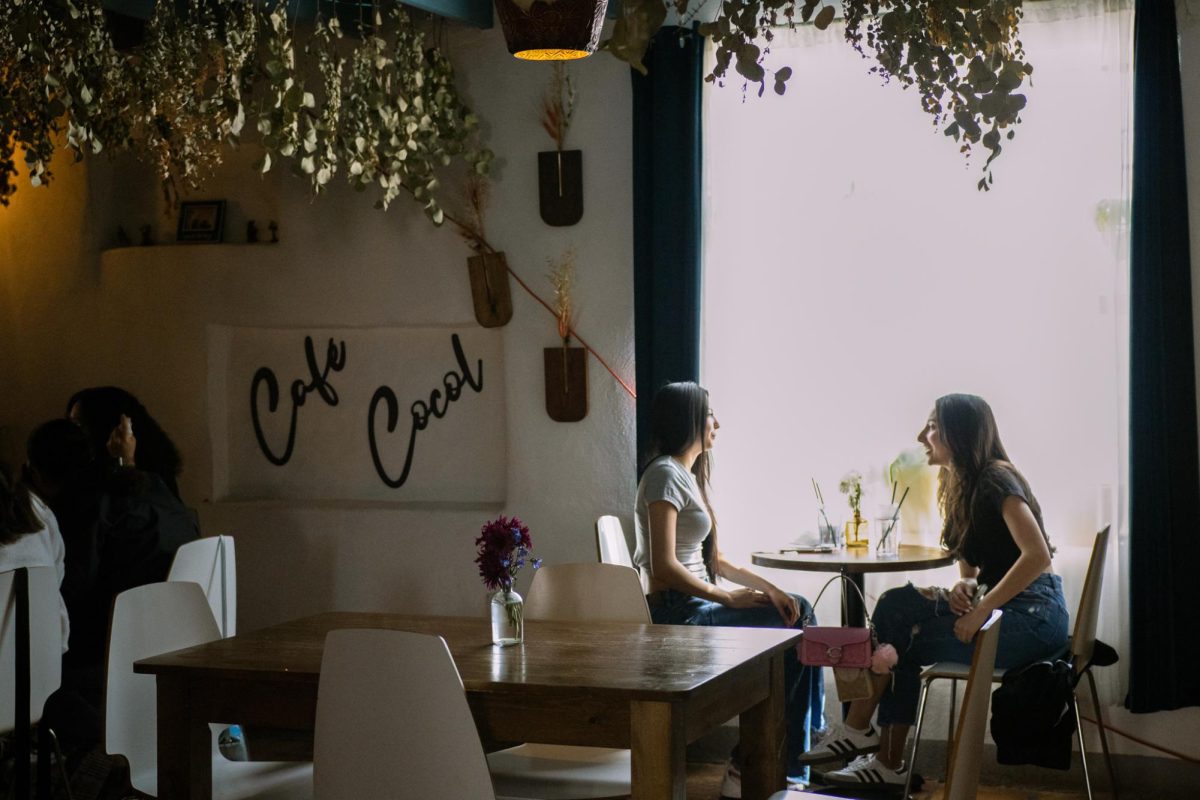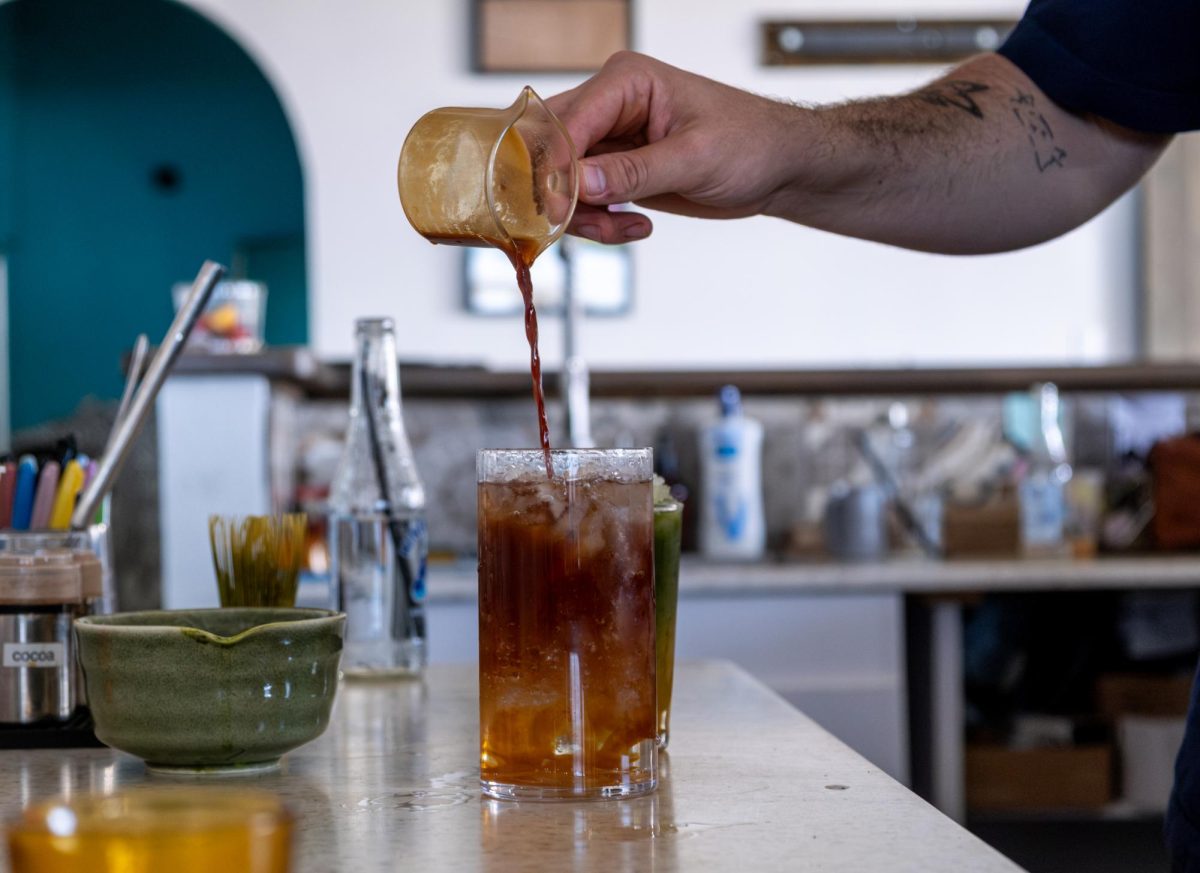Nestled on Westwind Drive and Pino Real Drive, the Flor de Barro Gallery appears to be another typical residence on the corner of an intersection. However, there is more to this typical-looking house than meets the eye. Behind its doors lies a collection of handmade pottery, lithographs, Day of the Dead-inspired artwork, and other interesting art forms that represent the indigenous and modern aspects of the Mexican art culture.
The gallery presents the El Paso community with various artworks and styles, mainly derived from Northern Mexico.
The collections mostly contain pieces from Mata Ortíz, a small village in the Mexican state of Chihuahua. The works include pottery directly inspired by the indigenous pottery found at the ruins of the Casas Grandes (also known as Paquimé), an archeological site located in the village.
Another location that is represented among the gallery is Michoacán, another state in Mexico. The pieces include hammered copper and beaded works, which represent the colorfulness of the tropical state’s culture.
Flor de Barro Gallery was established by the Calleros Family in 2019 and is directed by Andrea Calleros, the daughter of the family owners. Calleros’ priorities lie in working for Double Scope Productions, a film production company in the city, and the El Paso Film Festival, both of which introduced her to the art scene in the city. Today, she adds being the gallery’s director to that list. She described her journey to becoming the gallery’s director through stories of visiting ancient ruins and discovering something new in Mexico.
“We visited Paquíme when I was around five to six years old, which is, by the way, the largest archaeological site in Northern Mexico. It’s really worth making a trip down there and seeing it,” Calleros said. “I remember I was fascinated by it, then we went to the different ceramics studios and galleries, but we couldn’t afford anything,. So [years later] my dad said you know what, we never went back, we should take a trip down there! So [we went back and] he came back with a lot of pieces, like a lot of them, and he kind of got obsessed with it. He invited some of his friends to come see them, and some of them said, ‘You know what, let me purchase one from you, I’d love to take one home.’ and this is where the idea was planted, and that was like July 2018. By the next March, we were open.”
El Paso is known for its Mexican American culture and heritage, but what about the artistic aspect of the two? The El Paso Museum of Art serves as one of the main centers for Mexican art in the city, and perhaps the most popular among the community That is where Flor de Barro Gallery steps into the spotlight.
The gallery’s entire collection comprises of pottery and other forms of art solely from Mexican artists or methods. Calleros makes it clear that this gallery is here to present this angle of Mexican culture.
“I really love what this gallery is doing because a lot of people here are from Mexico, but we don’t really see a lot of that heritage [or] that culture here,” Calleros said. “You know it’s more like colonization history and stuff like that, like conquistadores, as well as some of the indigenous people here too, but I hardly hear stuff or see stuff about Mexico, which is where the majority of those are from. When it comes down to the colonial history, I believe it’s very glorified here, and you can see that by the statue of [Juan de Oñate] at the airport, so I think it’s I think that was a result of like a misunderstanding of really what our heritage is like.”
Not only is this gallery’s mission defined as introducing a new art style and culture to El Pasoans, but Calleros also described it as giving a level of meaning to the artworks themselves.
Today, it would be an understatement to say that genuine art has become undervalued and underappreciated. The question for today’s art has become: Why pay so much for handcrafted art when you can buy a generic one from a retail store? In response to such an attitude among the masses, Calleros has made it the gallery’s mission to bring attention to authentic artwork that bona fide artisans make.
Through the gallery, Calleros hopes to extend a reach from artists to the community. It is also through the displays that she wants to show how important the art is and that it should be valued.
“When it comes to traditional art, or any art because art is not very well paid as you know, a lot of it is just things to sell to tourists and survive,” Calleros said. “With the gallery, what we’re trying to do is to set them in a in a place where they can be better appreciated as the actual fine art that they are, rather than a product. So that’s why we try to people try to educate people on the processes, you know, how they’re made, the history behind them because that’s really what matters and what you’re seeing here has a lot of meaning,. Most artists are generational, meaning the artists that make these pieces learn directly from their parents and their grandparents or their community. [There is] this sense of pride of that, you’re doing, you know, the craft that your family has taught you, so I think there’s a lot of pride behind these pieces.”
People like the Calleros family are doing what they can to preserve and show such significant artwork that carries a history on its back. However, the road to emphasize the importance of these pieces is a two-way street. Not only is it up to people like the Calleros family to introduce the art and its significance to us, but it is also up to the people to acknowledge it.
“I think it’s important to have small cultural centers like this, that’s kind of like what the long term [goal] for the gallery [is], to really start growing a lot more and bringing exhibits and bringing people, it’s not about making money it’s about really making arts and making culture accessible to people, that’s really my long term aim with the gallery,” Calleros said. “As you know, we have everything here for sale, but I feel that a lot of people feel bad coming in and maybe not buying anything, but as I said, that’s not what it’s about. I like it when people come in and just talk, that’s okay for you to come in just to learn; we are happy to do that.”
Elisha Nunez is a contributor and may be reached at email [email protected]

